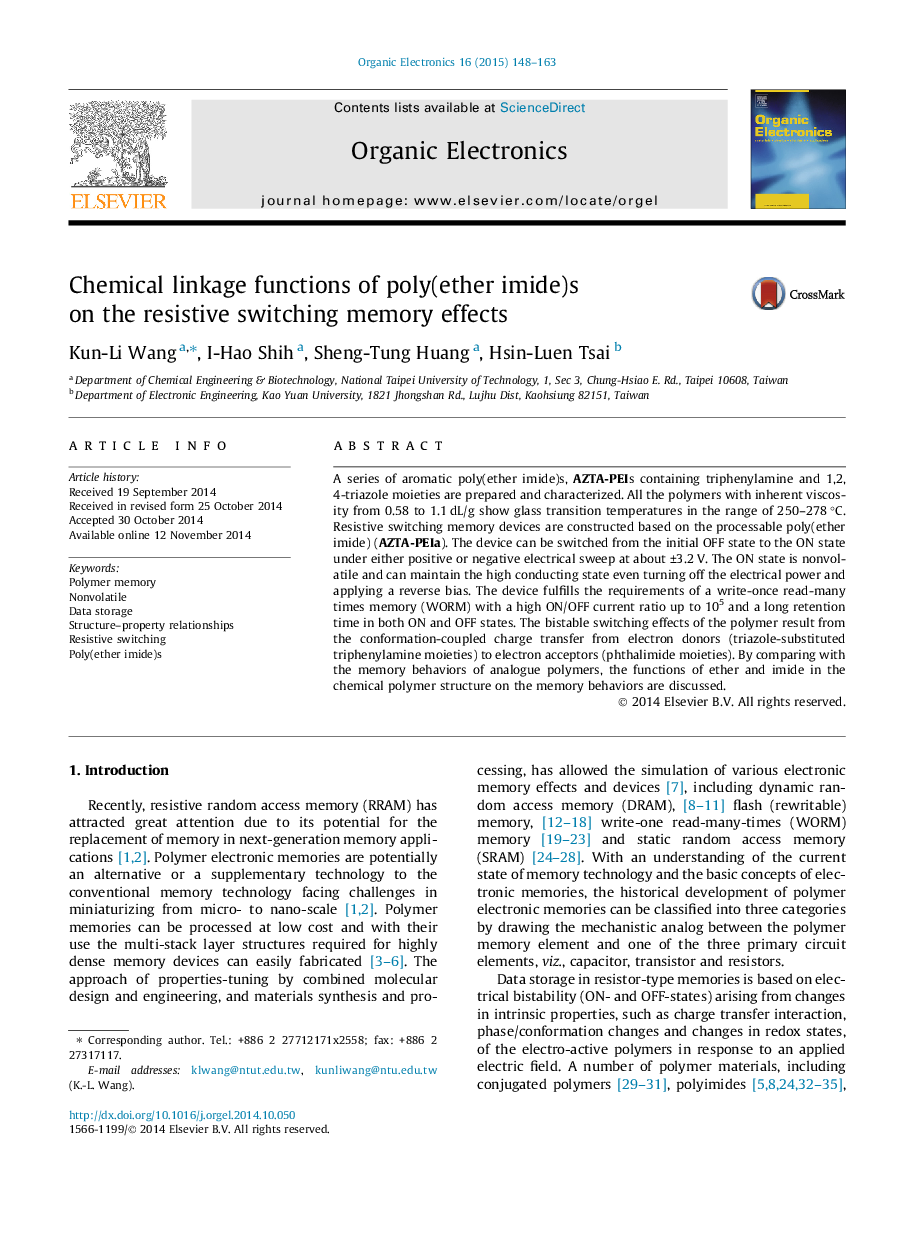| Article ID | Journal | Published Year | Pages | File Type |
|---|---|---|---|---|
| 1264327 | Organic Electronics | 2015 | 16 Pages |
•Chemical functional linkages on memory effects are compared and discussed.•The analogue polymers containing different linkages show different memory behavior.•The polymer memory behaviors arise from conformation-coupled CT process.•The strong electron withdrawing imide plays an important role in the WORM behavior.•The ether linkage functions as an additional barrier for the CT process.
A series of aromatic poly(ether imide)s, AZTA-PEIs containing triphenylamine and 1,2,4-triazole moieties are prepared and characterized. All the polymers with inherent viscosity from 0.58 to 1.1 dL/g show glass transition temperatures in the range of 250–278 °C. Resistive switching memory devices are constructed based on the processable poly(ether imide) (AZTA-PEIa). The device can be switched from the initial OFF state to the ON state under either positive or negative electrical sweep at about ±3.2 V. The ON state is nonvolatile and can maintain the high conducting state even turning off the electrical power and applying a reverse bias. The device fulfills the requirements of a write-once read-many times memory (WORM) with a high ON/OFF current ratio up to 105 and a long retention time in both ON and OFF states. The bistable switching effects of the polymer result from the conformation-coupled charge transfer from electron donors (triazole-substituted triphenylamine moieties) to electron acceptors (phthalimide moieties). By comparing with the memory behaviors of analogue polymers, the functions of ether and imide in the chemical polymer structure on the memory behaviors are discussed.
Graphical abstractA series of poly(ether imide)s (AZTA-PEIs) were prepared and the memory behaviours were investigated. The linkage functions of ether and imide in the poly(ether imide) on the WORM memory behaviours and switching voltages were investigated with comparing analogous polymers such as the polyether (AZTA-PEa) and polyimides (AZTA-PIa, OXTA-PIa). The twisted intramolecular charge transfer (TICT) can explain reasonably the memory effects.Figure optionsDownload full-size imageDownload as PowerPoint slide
